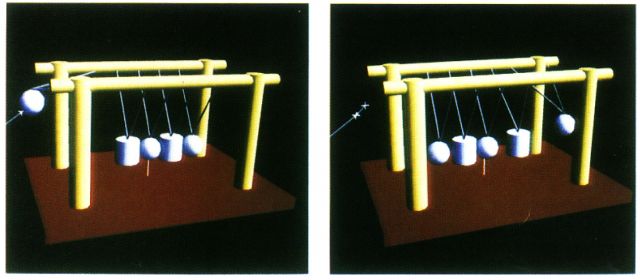Brian Knep
From a paper we wrote while I was in the Brown University Computer Graphics Group:
We present an interactive modeling and animation system that facilitates the integration of a variety of simulation and animation paradigms. This system permits the modeling of diverse objects that change in shape, appearance, and behavior over time. Our system thus extends modeling tools to include animation controls. Changes can be effected by various methods of control, including scripted, gestural, and behavioral specification. The system is an extensible testbed that supports research in the interaction of disparate control methods embodied in controller objects. This paper discusses some of the issues involved in modeling such interactions and the mechanisms implemented to provide solutions to some of these issues.
The system’s object-oriented architecture uses delegation hierarchies to let objects change all of their attributes dynamically. Objects include displayable objects, controllers, cameras, lights, renderers, and user interfaces. Techniques used to obtain interactive performance include the use of data-dependency networks, lazy evaluation, and extensive caching to exploit inter- and intra-frame coherency.
